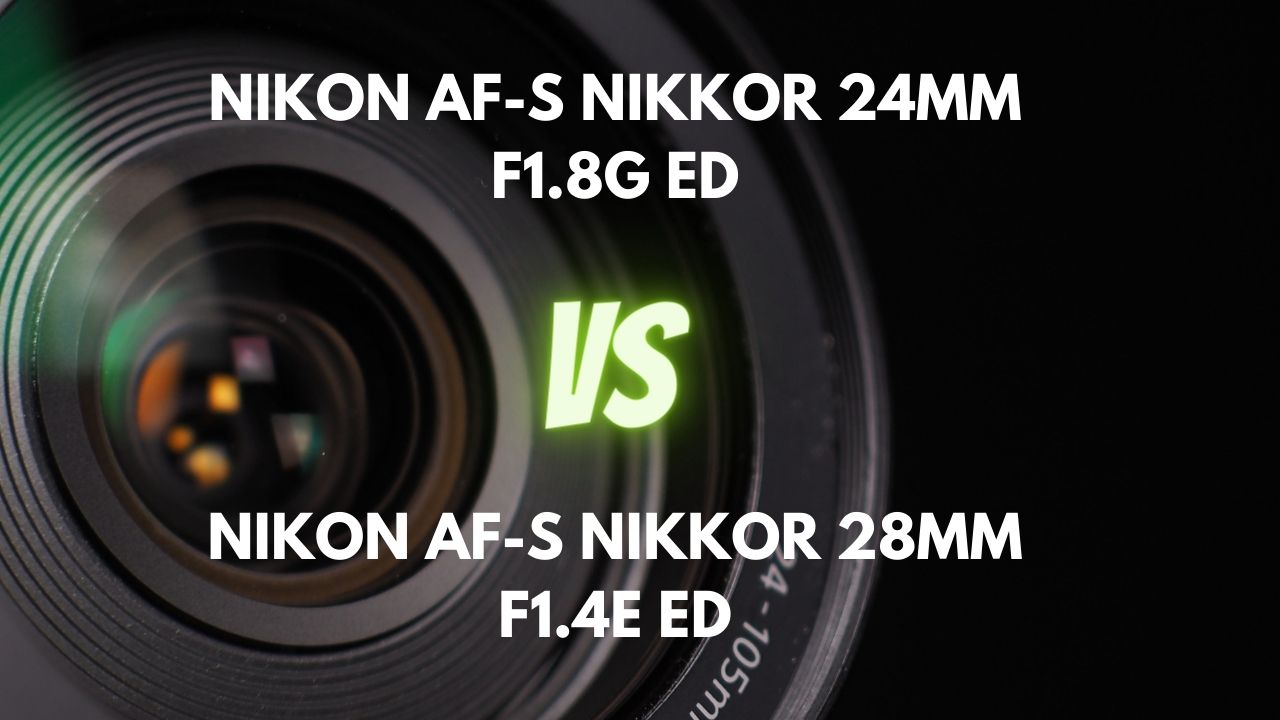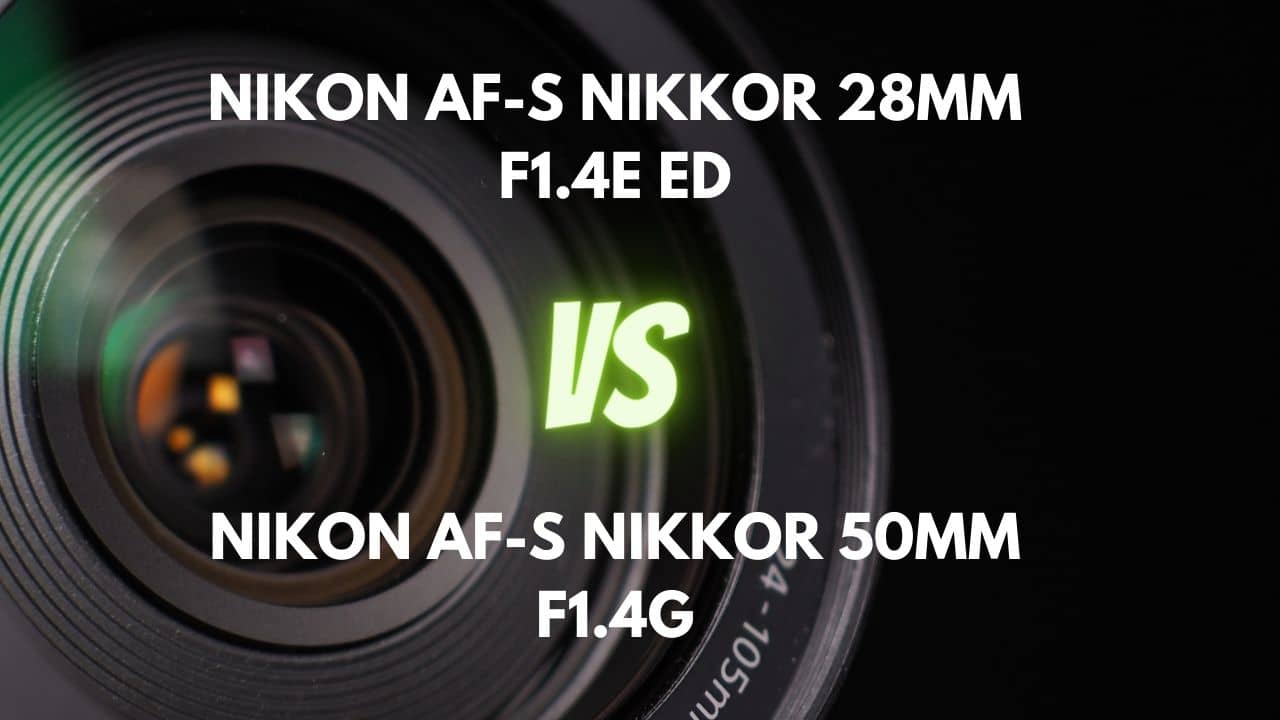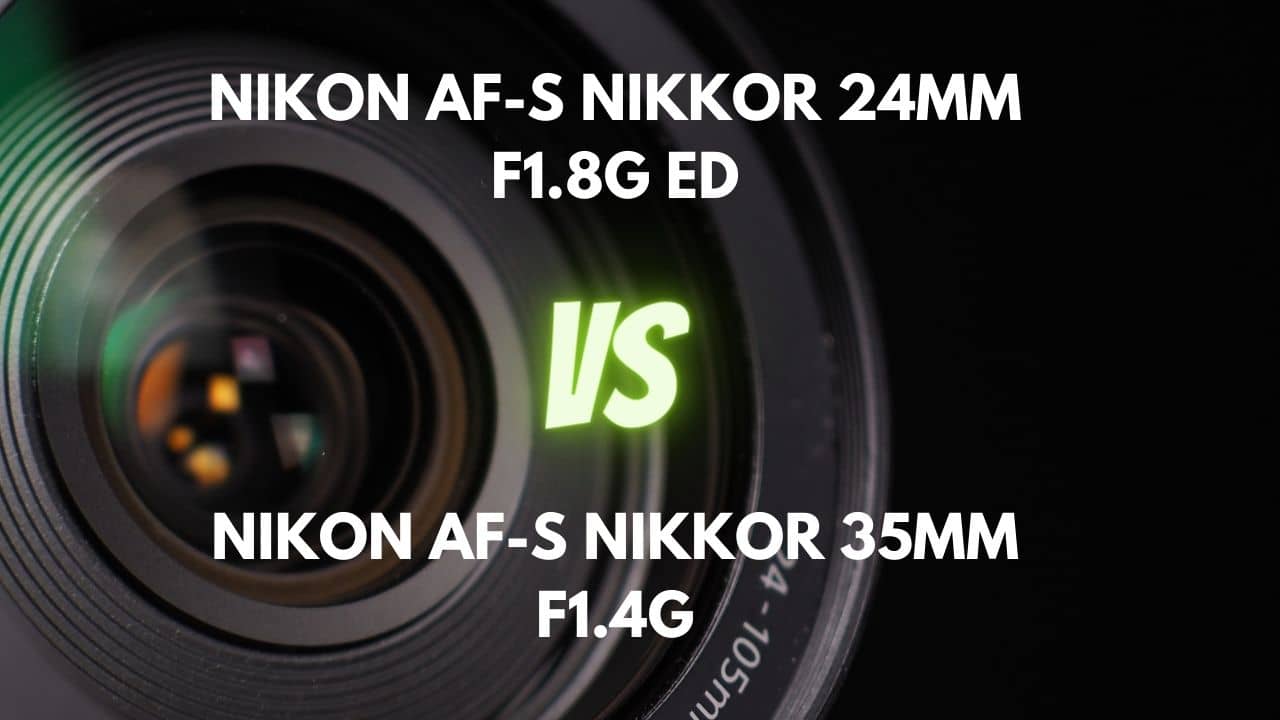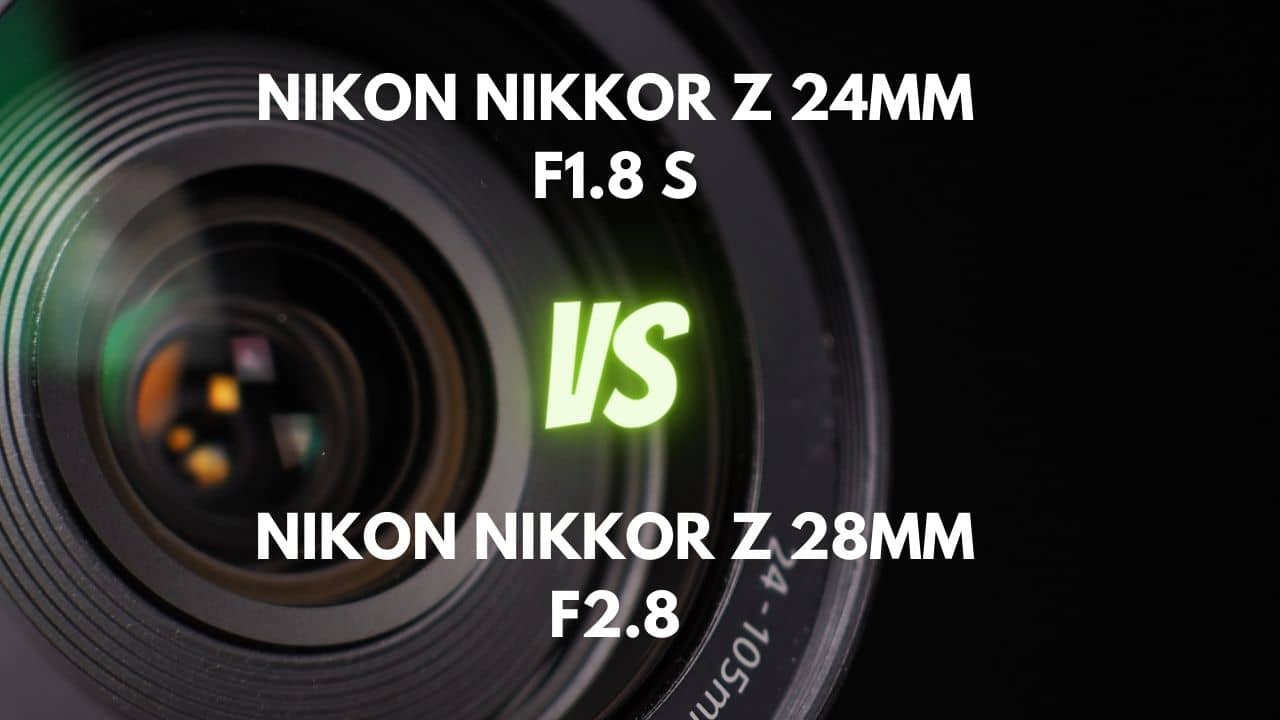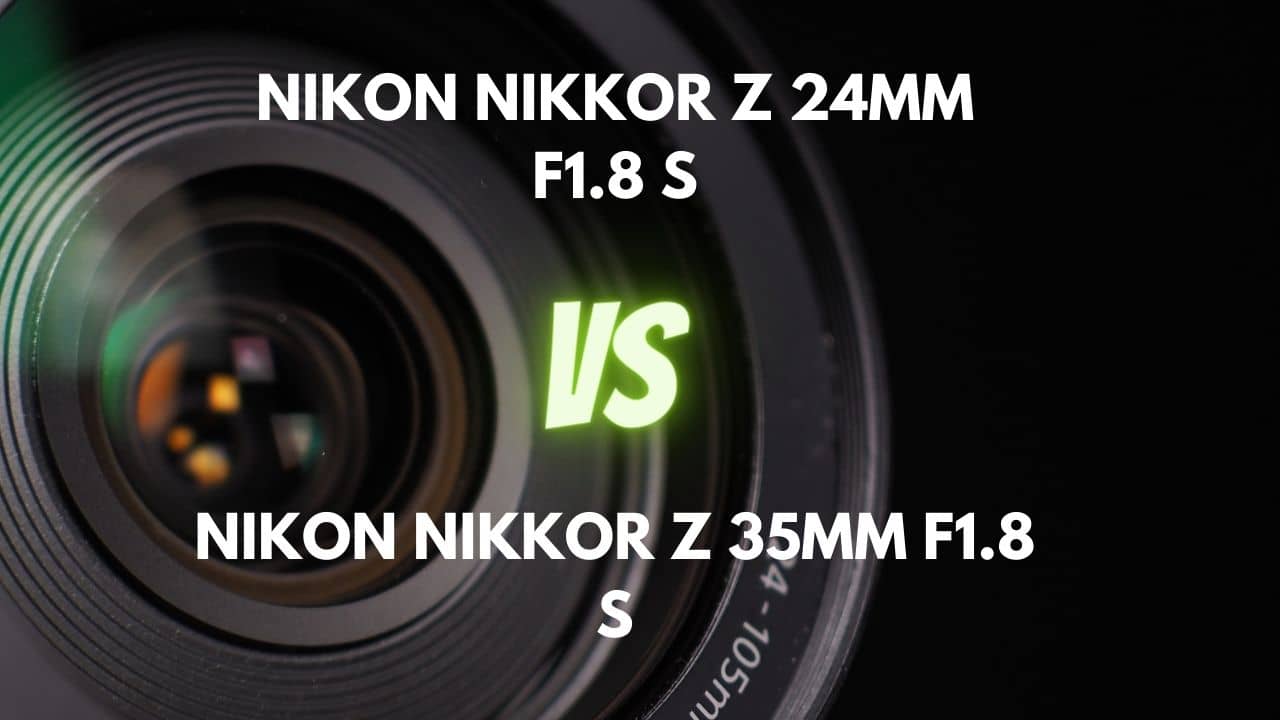Are you a photography enthusiast in search of the perfect wide-angle lens for your next creative project?
Perhaps you’re wondering whether to invest in a prime lens or a versatile zoom lens to capture stunning landscapes, mesmerizing architectural masterpieces, breathtaking astrophotography, or captivating environmental portraits.
Get ready to dive into an in-depth comparison of two exceptional contenders in the world of wide-angle lenses: the Nikon 20mm f/1.8 prime lens and the Nikon 16-35mm f/4 zoom lens.
In this article, we will explore the strengths and weaknesses of these two lenses, highlighting their performance in various aspects such as low light capabilities, image quality, portability, distortion control, and more. By understanding the unique characteristics of each lens, you will be able to make a well-informed decision tailored to your photography needs and preferences.
So, buckle up and join us on this enlightening journey to discover which of these wide-angle wonders will be your trusty companion in capturing unforgettable moments and awe-inspiring scenes.
Your photography game is about to level up!
Overview
| Nikon AF-S NIKKOR 20mm F1.8G ED | Nikon AF-S NIKKOR 16-35mm F4G ED VR | |
|---|---|---|
| Max Aperture | F1.8 | F4.0 |
| Aperture Type | Fixed | Fixed |
| Focal Range (mm) | 20 | 16-35 |
| Max Format | 35mm FF | 35mm FF |
| Zoom Ratio (X) | 1 | 2.2 |
The Nikon 20mm f/1.8 has a maximum aperture of f/1.8, which allows more light to enter the camera, making it ideal for low light situations. However, it has a fixed focal length of 20mm, which limits its versatility compared to zoom lenses. Its larger aperture can also create a shallower depth of field, which may be useful for isolating subjects but not essential for landscape or architectural photography that requires a deeper depth of field. Despite these limitations, prime lenses like the 20mm lens often have better image quality, sharpness, contrast, and reduced chromatic aberration.
On the other hand, the Nikon 16-35mm f/4 has a fixed maximum aperture of f/4.0 and offers a 2.2x zoom ratio, making it more versatile for various photography situations. Its maximum aperture is smaller than the 20mm lens, which may impact its low light performance and depth of field control. However, its focal range of 16-35mm makes it suitable for both wide-angle and standard perspectives. While the image quality of zoom lenses may not be as optimized as prime lenses, modern zoom lenses like this 16-35mm lens can still deliver excellent results.
In conclusion, the 20mm lens excels in low light situations and offers better image quality, while the 16-35mm lens provides more versatility with its zoom range. If you prioritize low light performance and image quality, the 20mm lens is the superior choice. However, if versatility and the ability to adapt to different photography scenarios are more important to you, the 16-35mm lens would be the better option.
Design and Ease of Use
| Nikon AF-S NIKKOR 20mm F1.8G ED | Nikon AF-S NIKKOR 16-35mm F4G ED VR | |
|---|---|---|
| Diameter x Length (mm) | ⌀82.5×80.5mm | ⌀82.5×125mm |
| Weight (gr) | 355 | 680 |
| Filter Thread (mm) | 77 | 77 |
| Weather Sealing | No | Yes |
| Distance Scale | Yes | Yes |
| DoF Scale | No | No |
| Hood Supplied | Yes | Yes |
| Hood Code | HB-72 | HB-23 |
The Nikon 20mm f/1.8 has a diameter of ⌀82.5mm and a length of 80.5mm, making it relatively compact and lightweight at 355 grams. This compactness offers several advantages, such as improved portability, better balance with your camera setup, increased discreetness, easier storage, and simpler lens swapping. A smaller and lighter lens like the 20mm can be particularly beneficial for travel and street photography, where blending in and ease of handling are essential.
In contrast, the Nikon 16-35mm f/4 is larger and heavier, with a diameter of ⌀82.5mm and a length of 125mm, and a weight of 680 grams. This added size and weight might make the lens more challenging to carry around and handle, especially during longer shoots. The larger size could also impact the balance of your camera setup, making it feel front-heavy and potentially less comfortable to use. However, the 16-35mm lens offers a zoom range of 16-35mm, providing more versatility in framing and composition compared to the fixed focal length of the 20mm lens.
In conclusion, if you value portability, discreetness, and ease of handling, the 20mm lens is the superior option. However, if versatility in framing and composition is more important to you and you’re willing to accommodate the larger size and weight, the 16-35mm lens would be the better choice.
Lens Mount and Barrel
The Nikon 20mm f/1.8 features a metal lens mount, ensuring a durable and secure connection to the camera body. The rubber gasket around the mount enhances protection from dust and moisture. The lens barrel is primarily made of matte black polycarbonate, contributing to its lightweight design. Furthermore, the rear focusing design prevents the lens from changing its physical size when focusing, making it convenient for use with filters and maintaining a consistent size during operation.
On the other hand, the Nikon 16-35mm f/4 also has a metal lens mount, with a rubber gasket for weather sealing. Its magnesium alloy chassis enhances overall toughness. However, its lens barrel is made of plastic, which makes it lightweight but potentially less durable over time. The exterior markings may wear off with use, but the lens still offers weather-resistant sealing.
Considering the lens mount and barrel, the 20mm lens offers a solid balance between durability and lightweight design, making it a suitable choice for photographers prioritizing portability without compromising on build quality. The 16-35mm lens, with its magnesium alloy chassis and weather sealing, may be more appropriate for photographers who require added toughness and durability in various shooting conditions, despite its plastic lens barrel.
Weather Sealing
The Nikon 20mm f/1.8 has a weather-sealed metal lens mount with a rubber gasket that offers protection against dust and moisture. However, the lens lacks internal seals at the rings, switches, or front of the barrel, and the front element does not have a fluorine coating for added protection against smudges and water droplets.
On the other hand, the Nikon 16-35mm f/4 also features a rubber gasket at the lens mount for weather sealing. Its overall build quality combines solid plastic construction and a weather-sealed metal lens mount, providing a degree of protection against environmental elements.
Weather sealing is essential for photographers who shoot in various outdoor conditions, as it prevents dust, moisture, and light water splashes from entering the lens, ensuring durability and performance. Fully weather-sealed lenses offer better protection, durability, and performance in challenging environments compared to non-sealed lenses.
In conclusion, neither lens offers complete weather sealing. If weather sealing is a priority for your photography needs, consider invest a lens that is fully weather-sealed.
Rings
The Nikon 20mm f/1.8 is equipped with a single focus ring located towards the front of the lens, featuring a broad 2.4 cm wide profiled rubber surface for easy gripping and a comfortable feel. The focus ring moves smoothly with a clear geared sensation, providing decent precision.
It rotates one-quarter turn from minimum to infinity focus, with a throw of around 80 degrees for manual focusing. The lens also includes a windowed distance scale and a minimal depth-of-field indicator with markings for f/16 only. However, there is a slight play between the focus ring’s movement and the focus-action, which may be bothersome for manual focusing.
In contrast, the Nikon 16-35mm f/4 has two rings: a zoom ring and a focus ring. The zoom ring is located close to the camera body, moving smoothly through a quarter of a turn between the 16mm and 35mm focal length settings. The focus ring, situated towards the front of the lens, rotates through a quarter of a turn for focusing.
Both rings have ridged rubber coatings for secure gripping and are well-damped. The wider ridges on the zoom ring are designed to provide enhanced grip security, featuring two notches cut into each ridge. The focus ring, while turning only a short 50 degrees, provides sufficient precision for accurate focus. There is a recessed distance scale with 4 settings in meters and feet in front of the focusing ring, but no depth-of-field markings. Some copies of the lens may have play between the focus ring and internal gears.
In conclusion, the 16-35mm lens offers greater versatility with both zoom and focus rings, along with better grip security. Although the focus throw is shorter, it is adequate for accurate focus. On the other hand, the 20mm lens has a single focus ring with a longer focus throw, which may be more suitable for those seeking finer control over focus adjustments.
Switches/Buttons
The Nikon 20mm f/1.8 has a single switch on the side of the barrel, which is the M/A-M focus mode switch. This switch enables you to alternate between autofocus with manual focus override (M/A) and full manual focus operation (M). Being the only control switch on the lens, it is easy to locate and use.
On the other hand, the Nikon 16-35mm f/4 features two slider switches located behind the focusing ring on the lens barrel. Located at the top of the lens, the switch closest to the user controls the focus mode, while the lower switch can be toggled on and off to activate or deactivate the VR II stabilization feature. These switches provide additional functionality compared to the single switch on the 20mm lens.
In conclusion, the 16-35mm lens offers more control options with its two slider switches, providing both focus mode adjustment and VR II stabilization control. The 20mm lens, while simpler with its single focus mode switch, may be more suitable for those who prefer a minimalistic design.
Filter Thread
The Nikon 20mm f/1.8 features a 77mm filter thread made of plastic, which, although lightweight, could potentially wear out with repetitive mounting and dismounting of filters if not handled carefully. The front element and filter thread do not rotate during focusing, making it convenient to use with filters such as polarizers without needing to re-adjust them in the field. The plastic construction remains compatible with standard 77mm filters, filter holder systems, and polarizing filters.
Meanwhile, the Nikon 16-35mm f/4 also has a 77mm filter thread, suitable for landscape photography. This plastic construction is lightweight and can bounce back when dropped. The filter thread is easy to use with various filters, such as ND, IR, and CPL filters, making it more appealing to photographers who use filters regularly. To protect the lens and improve image quality, it is recommended to use a high-quality filter, such as the Hoya multicoated HD3 UV or the B+W 77mm 010.
In conclusion, both lenses have a 77mm filter thread, allowing for compatibility with standard filters and filter holder systems. The 16-35mm lens may be more suitable for photographers who frequently use filters due to its compatibility with a wider range of filters and its ease of use. Although both lenses have plastic filter threads, proper handling should minimize any concerns regarding durability.
Lens Hood
The Nikon 20mm f/1.8 comes with an included HB-72 lens hood featuring a petal-shaped, plastic design, providing a balance between protection and minimal vignetting. The ergonomic bevel of the lens hood allows for smooth rotation when attaching or detaching it from the lens. Additionally, the lens hood snaps easily onto the front of the lens and sits tightly without wobbling, ensuring optimal performance and protection against unwanted stray light or potential impact damage.
On the other hand, the Nikon 16-35mm f/4 includes a reversible lens hood, making storage easy. It can be used with a polarizer filter, and although it is short due to the wide-angle view, it offers the same level of protection as the HB-23 lens hood from the Nikon 17-35mm lens.
In conclusion, both lens hoods provide protection and help reduce unwanted light, but the 20mm lens hood offers a more ergonomic design, ensuring a secure fit and ease of use. The 16-35mm lens hood is more compact and can be easily stored, making it convenient for on-the-go photographers.
Focusing and Optical Stabilization
| Nikon AF-S NIKKOR 20mm F1.8G ED | Nikon AF-S NIKKOR 16-35mm F4G ED VR | |
|---|---|---|
| Autofocus | Yes | Yes |
| AF Motor | Silent Wave Motor | Silent Wave Motor |
| Rotating Front Element | Does not rotate on focusing | Does not rotate on focusing |
| Min Focus Distance | 0.2m | 0.28m |
| Max Magnification (X) | 0.23 | 0.25 |
| Full-Time Manual Focus | Yes | Yes |
| Focus Method | Internal | Internal |
Focusing Performance
The Nikon 20mm f/1.8 features a fast and accurate autofocus performance, thanks to its silent wave motor (SWM) technology, providing near-silent and quick operation. Taking approximately 0.6 seconds to focus from infinity to 20 cm, this lens is suitable for various shooting situations. In low-light conditions, the 20mm lens performs well with newer Nikon camera bodies like the D750 and D810.
With an impressive autofocus acquisition speed and 98.1% consistency rate, this lens offers manual focus override through an M/A-M focus mode switch for priority manual adjustments during autofocus. However, there is some slack/play between the focus ring movement and the focus-action, which can be a nuisance for manual focusing.
In comparison, the Nikon 16-35mm f/4 also boasts a fast, accurate, and quiet autofocus system, utilizing a silent wave motor (SWM) that performs well in low-light situations. The lens takes only 0.5 seconds to go from close to infinity, and manual focus override is available for more control.
The manual focus action is smooth and well-damped, but some copies of the lens may have play between the focus ring and internal gears. This lens records audible clacks and snaring sounds when focusing, but VR-operation is quiet.
In conclusion, both lenses offer fast and accurate autofocus performance, but the 20mm lens has a slight edge due to its impressive autofocus acquisition speed and consistency rate. However, the 16-35mm lens features a smoother manual focus action, which might be preferred by some photographers.
Optical Stabilization
The Nikon 20mm f/1.8 does not have internal optical stabilization. On the other hand, the Nikon 16-35mm f/4 features a Vibration Reduction II system, which Nikon claims can provide an advantage of up to 4 stops. It’s worth noting that individual results may vary, but field tests have demonstrated the potential for up to 3 stops longer shutter times at the long end and up to 2 stops at the short end of the focal range when capturing a steady subject. The VR operation is quiet and can be turned on or off with a switch. Although VR does increase shutter delay in daylight, it enables hand-holding at least 1.5 stops slower than the focal length would typically allow.
Optical stabilization is generally less critical for wide-angle lenses, as they are less prone to camera shake due to their shorter focal lengths and wider fields of view. However, it can be beneficial in certain situations, such as low-light handheld photography, slower shutter speeds, or video recording. If your camera has in-body image stabilization (IBIS), the need for optical stabilization in a wide-angle lens may be even less crucial.
Image Quality
| Nikon AF-S NIKKOR 20mm F1.8G ED | Nikon AF-S NIKKOR 16-35mm F4G ED VR | |
|---|---|---|
| Special Elements | 2 ED, 2 aspherical, and Nano Crystal Coat | 2 ED glass elements, 3 aspherical lenses and Nano Crystal Coat |
| Diaphragm Blades | 7 | 9 |
| Circular Aperture | Yes | Yes |
Aberration
The Nikon 20mm f/1.8 displays various types of aberrations, including chromatic, coma, and spherical aberrations. Chromatic aberration is relatively well-controlled, with only minor lateral chromatic aberrations that can be easily corrected in post-processing. Longitudinal chromatic aberration is present, but reduces by stopping down to f/5.6.
The lens exhibits almost no coma, making it suitable for astrophotography when stopped down to f/2.8 or with slight cropping of the frame. However, extreme corners at f/1.8 may present issues with coma handling. Spherical aberration is not explicitly mentioned, but the lens’s performance in bokeh, light fall-off, and edge-to-edge sharpness can provide insight into its overall performance.
In contrast, the Nikon 16-35mm f/4 exhibits exceptional control over chromatic aberration, with virtually no visible signs of lateral chromatic aberrations. Furthermore, when shooting JPEG with modern Nikon digital SLR bodies, these aberrations can be automatically corrected. The lens also boasts minimal levels of coma and spherical aberration, delivering outstanding optical performance with negligible aberrations.
In conclusion, the 16-35mm lens offers superior aberration control compared to the 20mm lens, delivering impressive optical performance with minimal issues. Although the 20mm lens manages chromatic and coma aberrations reasonably well, the overall performance of the 16-35mm lens in handling various aberrations is more consistent and reliable.
Sharpness
The Nikon 20mm f/1.8 displays good center sharpness even at its widest aperture of f/1.8, though the corners tend to be soft at this setting. Stopping down to f/2.8 or f/4 significantly improves the overall sharpness, including the edges. The sharpest aperture for this lens is around f/5.6, where both center-weighted and edge sharpness are optimized. At f/11, diffraction sets in, but the lens still maintains an impressive sharpness.
On the sharpness front, the Nikon 16-35mm f/4 is quite impressive, offering good to excellent sharpness across the board, albeit with some softness noticeable at the edges when shooting at wider apertures. Center sharpness is generally strong, with the sharpest aperture varying slightly depending on the focal length being used. Specifically, at 16mm, the center is already quite sharp even at wider apertures, with the sharpest setting being f/5.6.
While the corners can be somewhat softer when shooting wide open, stopping down the aperture can significantly improve the overall sharpness of the image. At 35mm, both borders and corners exhibit good resolution, and stopping down doesn’t appear to have a significant impact on sharpness. The ideal apertures for maximum sharpness are typically around f/8 or f/11, with some noticeable contrast loss observed when shooting at f/22.
Based on the comparison, the 20mm lens offers impressive center sharpness even at wider apertures, making it suitable for low-light situations or when a shallow depth of field is desired. However, the 16-35mm lens provides more consistent sharpness throughout the frame, especially when stopped down. This makes it a superior choice for photography that requires sharpness across the entire frame, such as landscape and architecture.
Bokeh Quality
The Nikon 20mm f/1.8 produces a bokeh that can be characterized as slightly busy, especially when wide open. Achieving good bokeh on 20mm large aperture full-frame lenses can be quite challenging, and while the bokeh is not the smoothest or most pleasing compared to other lenses, some outlining is noticeable in the background bokeh.
Stopping down to f/2.8 can help reduce some of the nervousness and make the bokeh appear a bit smoother. However, those seeking smoother out-of-focus backgrounds may prefer to use a normal or telephoto lens instead of a fast ultrawide.
On the other hand, the Nikon 16-35mm f/4 has a 9-segment diaphragm with rounded blades for pleasing bokeh. Although having anything substantially out of focus is rare with an ultrawide-to-wide zoom, if you can get a background out of focus, bokeh is excellent.
Considering that wide-angle lenses are typically not designed with bokeh quality as a primary concern, both lenses perform decently in terms of bokeh. However, the 16-35mm lens provides a more pleasing bokeh when it occurs, making it the superior choice for bokeh quality. This can prove especially beneficial when shooting environmental portraits or close-up photography, as a pleasing bokeh can lend a creative touch to your images and aid in separating your subject from the background.
Flare/Ghosting
The Nikon 20mm f/1.8 demonstrates strong resistance to flare and ghosting, largely due to its Nano Crystal Coat, which effectively reduces these artifacts under most conditions. However, when shooting directly into a bright light source like the sun, some flare and ghosting may still occur, which is common even in high-end lenses.
Flare and ghosting can also be influenced by factors such as aperture, the angle of light hitting the lens, and the use of filters. Minimizing these unwanted effects requires mindful framing and avoiding filters that may introduce additional flare or ghosting.
In terms of controlling flare and ghosting, the Nikon 16-35mm f/4 is quite proficient, requiring a strong backlight with the sun either inside or just outside the frame to produce any noticeable flare. While it may not be entirely immune to flare, it still performs significantly better than many other lenses in this regard.
The lens exhibits good response to stopping down and shows minimal effects of diffraction at f/16 and f/22, resulting in solid overall performance without being outstanding in any particular discipline.
In conclusion, both lenses exhibit commendable flare and ghosting resistance, which is crucial for wide-angle photography. However, the 20mm lens has a slight edge. This advantage can be beneficial when capturing images in challenging lighting conditions or when shooting directly towards bright light sources.
Vignetting
The Nikon 20mm f/1.8 experiences noticeable vignetting when shooting at wide apertures, particularly at infinity focus, where it can surpass 3 EV on average. However, this issue is reduced when stopping down the aperture. By f/2.8, vignetting is mostly ignorable, and by f/4 it becomes even less of a concern. When using filters, the lens performs well with both slim and standard-size filters, showing no significant vignetting issues even when using two stacked filters on a full-frame camera.
One downside to the Nikon 16-35mm f/4 is that it does exhibit noticeable vignetting in open-aperture shots at all focal length settings. However, this issue can be easily remedied by closing down the aperture by one or two stops. While the vignetting can be particularly strong at 16mm, the center performance is still very good even at maximum aperture.
In conclusion, both lenses exhibit vignetting to varying degrees, which is typical for wide-angle lenses. However, the 20mm lens has a slight advantage in terms of vignetting control, particularly when stopped down and used with filters. This makes it a more suitable choice for photographers who require better control over vignetting, especially when capturing wide-angle shots with high contrast or when using filters.
Distortion
The Nikon 20mm f/1.8 exhibits a moderate amount of barrel distortion, around 1.1%, which is not uncommon for an ultra-wide-angle lens with a wide field of view. This level of distortion is barely noticeable in field conditions and can be easily corrected in post-processing if necessary. The lens also demonstrates a slight waviness that remains after correction. In-camera distortion correction, when used with compatible Nikon cameras like the D810, effectively eliminates the distortion, resulting in images with little to no noticeable distortion.
Conversely, the Nikon 16-35mm f/4 does exhibit noticeable barrel distortion at 16mm, measuring at approximately 5.7%. However, this can be easily corrected in post-processing through the use of the Lens Corrections sub-module in Lightroom and Photoshop. As you zoom in, the distortion decreases, and by 24mm the lens is free of any noticeable distortion. Unfortunately, as you continue to zoom towards 35mm, pincushion distortion begins to appear, with approximately 1.3% distortion that can be noticeable in field conditions.
In conclusion, the 20mm lens has a clear advantage in terms of distortion control, exhibiting less distortion overall compared to the 16-35mm lens. This makes the 20mm lens a better choice for photographers seeking minimal distortion in their wide-angle shots, especially when working with subjects where distortion could be distracting or detrimental to the final image.
Final Verdict
In conclusion, for wide-angle photography genres such as landscape, architectural, astrophotography, and environmental portrait photography, the choice between the Nikon 20mm f/1.8 and the Nikon 16-35mm f/4 depends on the specific requirements of each photographer and the genre they focus on.
The 20mm lens is ideal for low light situations, better image quality, portability, and ease of handling, making it a great choice for astrophotography and photographers who prioritize discreetness. The superior distortion control and vignetting performance of the 20mm lens are particularly beneficial for architectural photography, where minimal distortion and even illumination are crucial.
On the other hand, the 16-35mm lens offers more versatility with its zoom range and better aberration control, making it suitable for landscape photography that requires consistent sharpness across the frame. The lens also provides more pleasing bokeh quality, which is valuable in environmental portrait photography, where background separation is essential.

